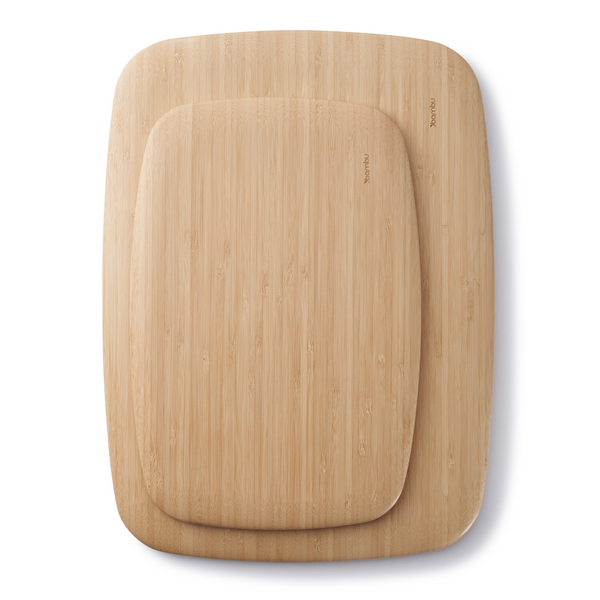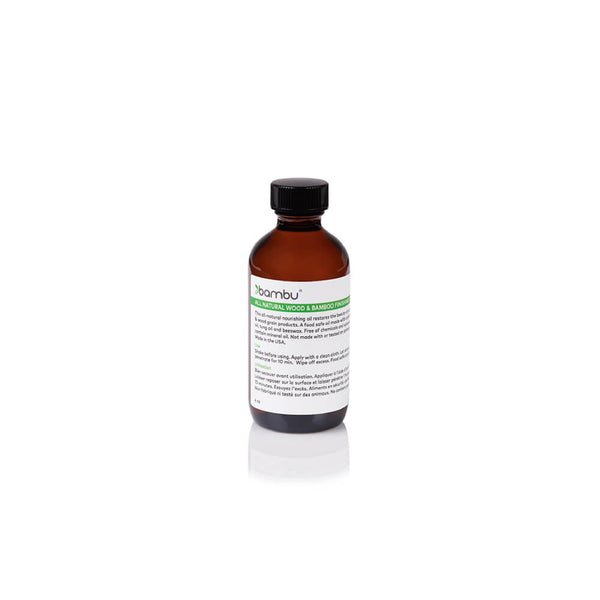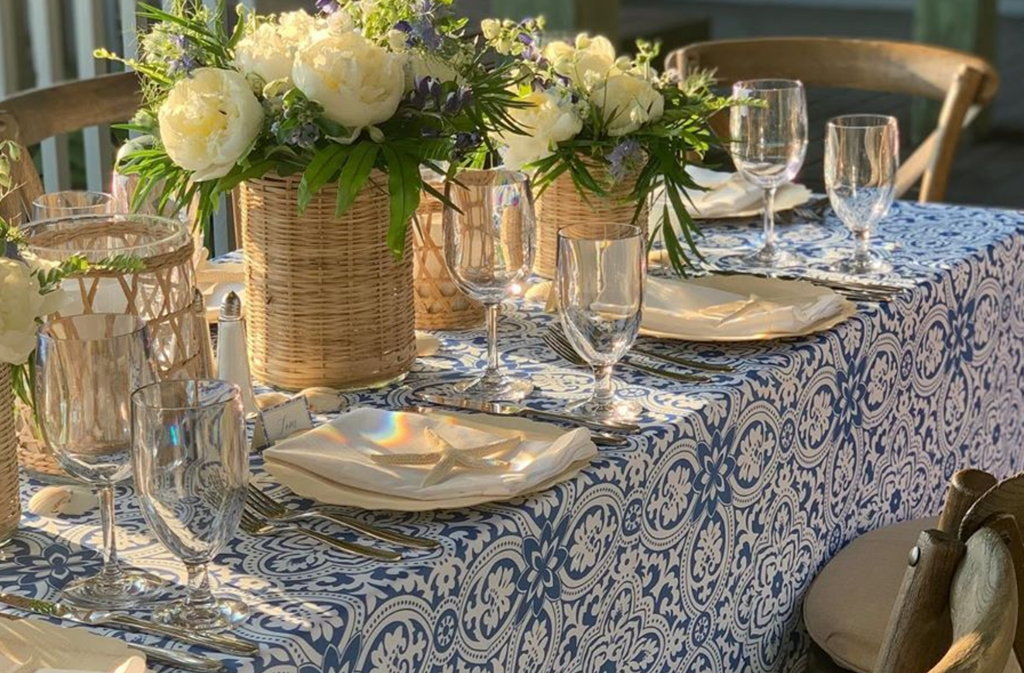The secret to years of use lies in these simple steps to bamboo cutting board care. From proper cleaning to how to use bamboo cutting board oil (and why you shouldn’t be using mineral oil), this guide will keep your kitchenware looking stellar for years to come.
The Basics: Bamboo Cutting Board Cleaning
Proper daily care for a bamboo cutting board is the most essential part of keeping it in top condition. A well taken care of cutting board can last for years and even decades, which makes this simple cleaning routine well worth it.
First, always store your board in a clean, dry place when it’s not in use. And when you need to clean it, follow these steps to bamboo cutting board cleaning:
- To start, hand wash your board with warm water and soap. We like to use Dr. Bronner’s Organic Soap or other gentle soap that is free of harsh chemicals. We also prefer to use a natural bristle brush to scrub the board clean. This treatment allows for a thorough bamboo cutting board cleaning.
- Once it’s clean, you can air dry or towel dry. Either way, make sure the board is completely dry before storing away.
- It’s not mandatory, but if you want to get your chopping board back to that “looking new” appearance (or keep it that way), then use Bambu Finishing Oil to oil your board. Shake the oil before use. Then, pour a capful or two onto a cloth and rub it into the surface of the board. And remember- a little goes a long way. Rub the oil across to the board for a light, even coat. Let it dry completely before you store it (we prefer propped up so it dries evenly).
How not to care for a bamboo cutting board
For best results and lifetime of use, there are a few things that should be avoided. Your board should not be cleaned in the dishwasher. And it’s also best not to use harsh chemicals, such as bleach, on bamboo. Avoid soaking your cutting board in water for extended periods of time. And finally, only finish it with an oil that is specifically made for bamboo. Natural cooking oils, like olive, canola, or walnut oil, should not be used on bamboo. These actions can cause it to splinter, warp, or smell bad. By avoiding them, you’ll keep your kitchen boards looking fresh for a long time.
Choose The Right Bamboo Cutting Board Oil, And Use It Correctly
Now that you know how to care for bamboo on a daily basis (and what to avoid) let’s talk about oiling your board. As we said above, many people who use their cutting boards daily oil them regularly. However, it’s not necessary to use oil on a daily basis. If you'd like to avoid drying out your board, applying finishing oil on a monthly basis for your daily chopping board is plenty. For smaller prep boards or bar cutting boards that aren’t used as often, you’ll want to oil after a big party or event in order to keep them in good shape.
Why Use bambu® Cutting Board Oil?
When it comes to oil for your bamboo products, choosing the right blend is key. Bambu® finishing oil is handcrafted in small batches with high-quality, all-natural ingredients sourced from sustainable resources. Our bamboo cutting board oil is made from a blend of linseed oil, pure tung oil, and pure beeswax. Beeswax is a key ingredient in our blend because of its all-natural waterproofing, hydrating, and shine properties. While many others recommend mineral oil, our blend does not contain this petroleum byproduct. Instead, you can enjoy a natural, safe blend that even smells great. And it’s packaged in a glass bottle--not plastic!
Bamboo Cutting Board Cleaning For Stains and Scratches
Even the best materials aren’t immune to the wear and tear of daily use. And, while we always suggest using different boards for produce, meat, and fish, as well as rotating your cutting boards for best results, your well-loved bamboo will eventually need some in-depth care. Luckily, learning how to care for a bamboo cutting board that’s been discolored or shows other signs of use is simple. In fact, these boards are some of the few that can be entirely refinished to like-new condition that’s fit to be displayed on the counter, even after years of use. Here’s how.
Removing Stains
If your bamboo is badly stained, follow these steps as soon as possible to remove tough stains. Turmeric or beet juice, anyone?
First, cut a lemon in half. Squeeze half a lemon onto the stained part of the board, and rub it in using the lemon half like a sponge. Then, rinse well. Repeat with the other half if necessary. This quick trick will pull even the toughest stains from the surface. Finally, apply a gentle rub of finishing oil after the stain is removed. Let it dry fully and then store as usual.
Removing Scratches and Knife Scars
Is your board beginning to show signs of knife use or other surface scratches? Not to worry. Unlike plastic cutting boards, bamboo can easily be refinished to make your surface smooth once more.
First, clean and dry your board. Once it’s fully dry, use a piece of coarse grit sandpaper to sand down the surface. If you need to remove deep knife cuts, start this process with 80-grit sandpaper, using medium force and sanding straight up and down the cutting board (no circles). Once the cuts or scratches on the surface have faded away, wipe the board down with a damp cloth and let it dry completely. Then, switch to fine-grain sandpaper between 150 to 220. Use light pressure and long strokes up and down the board to evenly finish the surface until it’s smooth to the touch. Wash your board once more. Finish the sanding process by applying finishing oil. This will hydrate and protect your new cutting board surface. Once it’s completely dry, it’s ready for use once more.
Caring for bamboo boards is extra easy because bamboo is naturally mycobacterial and less porous than other materials. Keeping a well-used, but well cared for bamboo board in the kitchen adds a warm touch to the space. And as you can now see, you can easily enjoy a beautiful kitchen piece that can last for years to come with these simple steps to care for a bamboo cutting board.
Want to know why bamboo is the best cutting board material? Read our full article here. Check out our customer reviews for cutting boards here.
Interested in breathing new life into your cutting board? Or looking for a new one? Explore bambu® boards and bamboo cutting board oil. Our 15-inch classic style was used in the photos above. It’s been among our most popular cutting boards since we first introduced it in 2004.
We hope you found this guide to bamboo cutting board cleaning and care helpful. Do you have a kitchen full of bamboo utensils, too? Read our guide to bamboo utensil care!








